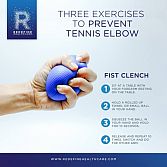Cervical Degenerative Joint Disease
The neck or cervical spine can be divided into three separate areas, each of which performs a different function due to the orientation of the joints between the vertebral. The upper cervical spine (C1,C2) are primarily built for rotation. The middle and lower cervical spine (C3-C7) are responsible for flexing, extension, side bending and remaining rotation or turning.
The greatest amount of movement occurs at cervical vertebra C5-C6, but the levels of C4-C5 and C6-C7 have almost as much. This movement produces more stress on these areas of the spine, thus the greatest amount of degeneration of the cervical spine occurs here.
Spinal and Facet JointsAside from the upper cervical spine (C1,C2 ) all other cervical vertebral levels consist of three joints. There is one joint consisting of the intervertebral discs which connect the bodies of the vertebra. There are also two posterior and lateral joints with one on each side called facet joints. The facet joints provide support, stability and facilitate motion of the cervical spine.
Facet joints are synovial joints, which have a smooth shiny contact surfaces called articular cartilage. The articular cartilage allows the bones to slide freely over each other with reduced friction and stress. Each joint is also surrounded by a protective sleeve called a capsule, and is lubricated by synovial fluid. The facet joints can become irritated and inflamed producing pain and dysfunction.
Common conditions of the facet joints include spondylosis, osteoarthritis of the spine, facet joint inflammation, degenerative joint disease of the spine and facet arthropathy.
Degenerative joint diseaseArthritis is a noninfectious progressive disorder of the joints. The normal articular joint cartilage is smooth, white, and translucent. In early arthritis or joint degeneration, the cartilage becomes yellow and opaque with localized areas of softening and roughening of the surfaces. As degeneration progresses, the soft areas become cracked and worn, exposing bone under the cartilage. Eventually, osteophytes (spurs of new bone) covered by cartilage form at the edge of the joint. As mechanical wear increases, the cartilage cells are unable to repair themselves. This wearing can become painful with loss of motion and function at that particular level.
The majority of degenerative joint disease is the result of mechanical instabilities, aging or changes within the joint.
Read more information: https://redefinehealthcare.com/cervical-degenerative-joint-disease/
Redefine Healthcare
2500 Morris Ave,
Union, NJ 07083
732-906-9600
Redefine Healthcare
10 Parsonage Rd Suite 208,
Edison, NJ 08837
732-906-9600
Reactions
Be the first to write a review.
Traditional braces have metal brackets that are fixed onto teeth for the duration of treatment. Thin metal wires power these, and often additional tension is added with brightly colored elastics. Thes
Read more
06-09-2022 - What Is a Tummy Tuck or Abdominoplasty?
A tummy tuck is a cosmetic procedure to remove excess fat and skin around your stomach. The procedure also tightens your abdominal wall muscles to give you a flatter, more toned abdomen. An experience
Read more
22-11-2021 - What Can You Expect from the Best CBD Gummies?
Over the past few years, many people have started to turn to CBD products for a variety of reasons. The research that has been carried out into the effects of CBD products has helped us to learn about
Read more
13-05-2021 - When Should You See a Gynecologist?
In addition to your once-a-year wellness exam, your gynecologist is there for you when you become pregnant. Set up regular visits so you can be monitored throughout the term of your pregnancy. And you
Read more
Author
Eric Freeman

